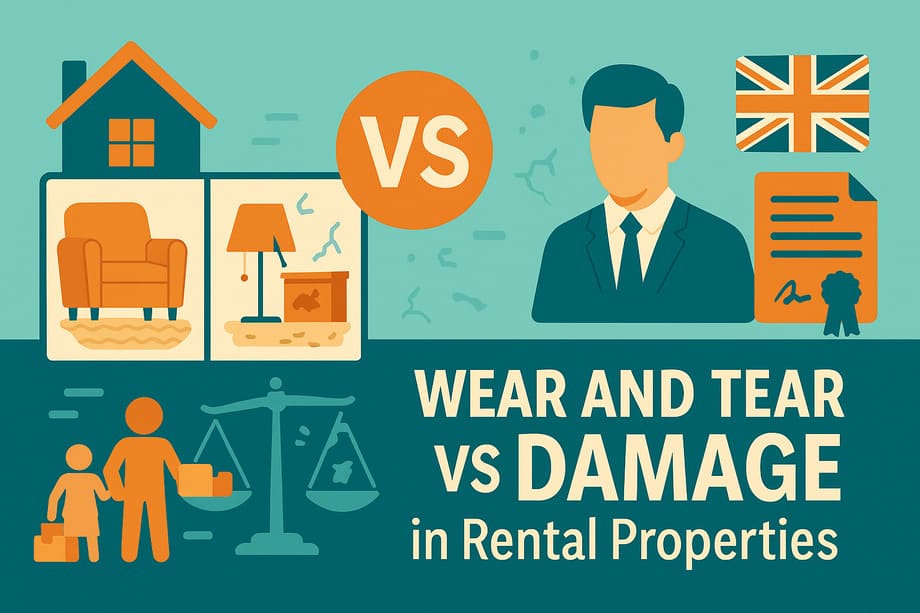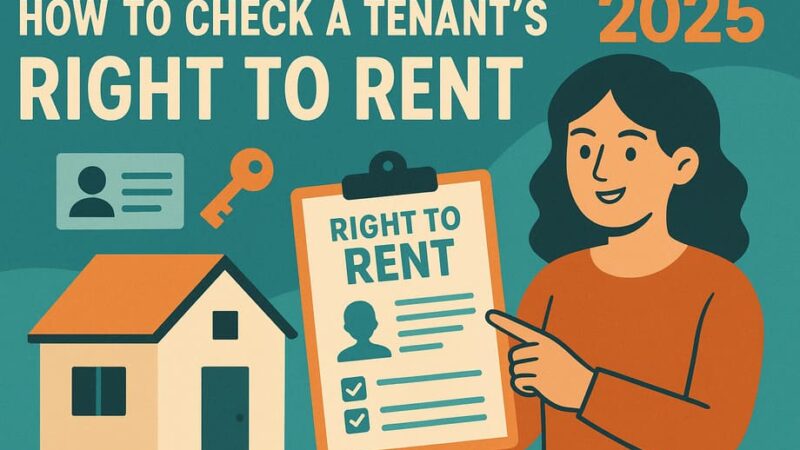Wear and Tear vs Damage in Rental Properties – A Complete Guide for UK Landlords and Tenants

When renting out a property, disputes often arise over the condition of the home at the end of the tenancy. The most common source of conflict? Understanding the difference between fair wear and tear and tenant damage.
Getting this distinction wrong can cost landlords money or unfairly penalise tenants. In this guide, we’ll break down what counts as wear and tear, what is damage, how adjudicators decide in deposit disputes, and how to protect yourself with the right evidence.
What Is Fair Wear and Tear?
Fair wear and tear is the natural deterioration of a property and its contents due to everyday, normal use. It happens over time and is unavoidable, no matter how careful a tenant is.
Examples of wear and tear:
- Carpets becoming flattened in high-traffic areas
- Small scuff marks on walls or paint fading over years
- Loose door handles or hinges from regular use
- Furniture wearing down with age
Wear and tear is the landlord’s responsibility and cannot be deducted from the tenant’s deposit.
What Is Tenant Damage?
Tenant damage occurs when something is broken, stained, or mistreated due to negligence, carelessness, or deliberate action.
Examples of tenant damage:
- Burns, rips, or pet scratches on carpets
- Large holes or graffiti on walls
- Broken windows or locks due to misuse
- Missing furniture or appliances provided in the tenancy
Tenant damage can be deducted from the deposit, provided it is properly documented.
Quick Comparison: Wear and Tear vs Damage
| Wear and Tear | Tenant Damage |
|---|---|
| Fading paint over years | Holes punched in the wall |
| Carpet thinning in hallways | Red wine stains or burns on carpet |
| Loose door handle | Door ripped off its hinges |
| Minor scuffs on skirting boards | Deep gouges from dragging furniture |
How Do Landlords and Deposit Schemes Decide?
When a dispute arises, UK deposit protection schemes such as TDS or DPS look at these factors:
- Length of tenancy – the longer the tenancy, the more wear and tear is expected.
- Age and quality of the item – a cheap carpet won’t last as long as premium flooring.
- Number of tenants – a family of four will cause more wear than a single professional.
- Condition at check-in – what the property was like before the tenant moved in.
Adjudicators also apply the principle of betterment. This means landlords can’t replace an old, worn item with a brand-new one at the tenant’s expense. Compensation must be fair and proportional.
Why a Property Inventory Matters
The single best way to avoid disputes is to have a detailed property inventory signed by both landlord and tenant at check-in and check-out.
An inventory records:
- Condition of walls, floors, and fixtures
- Appliances and furniture provided
- Meter readings and safety equipment
- Photos as supporting evidence
Avoid disputes with a clear inventory, download our free landlord property inventory template today.
How to Minimise Disputes as a Landlord
- Always provide tenants with a copy of the check-in inventory
- Take high-resolution photos or videos of key areas
- Conduct regular inspections (with 24 hours’ notice)
- Document all communications in writing
- Keep receipts for repairs and replacements
Common Mistakes Tenants Make
- Not reporting issues early (small leaks turning into major damage)
- Trying to fix repairs themselves without permission
- Leaving the property dirty at check-out
- Assuming all deductions are unfair without checking the tenancy agreement
Dispute Resolution Process
If you and your tenant cannot agree, the dispute can be referred to the Tenancy Deposit Scheme (TDS), Deposit Protection Service (DPS), or MyDeposits.
Both landlord and tenant will be asked to submit evidence, such as:
- The tenancy agreement
- The check-in and check-out inventory
- Photos, receipts, and communications
The adjudicator will then make a final decision.
Conclusion
The line between fair wear and tear and tenant damage can be tricky, but understanding the difference is essential for landlords and tenants alike.
- Landlords should protect themselves with clear inventories and evidence.
- Tenants should maintain the property and report issues quickly.
By keeping everything documented, disputes can often be avoided and when they do arise, they can be resolved fairly.
FAQ
Can landlords charge for wear and tear?
No. Landlords cannot deduct fair wear and tear costs from a tenant’s deposit.
What is considered fair wear and tear in the UK?
Normal deterioration over time, such as faded paint, minor scuffs, or worn carpets.
What counts as tenant damage?
Neglect, misuse, or intentional harm to the property, such as stains, burns, or broken items.
How can disputes be prevented?
By using a detailed property inventory, keeping photographic evidence, and maintaining clear communication between landlord and tenant.
Last Updated on September 23, 2025 by James Cartwright







